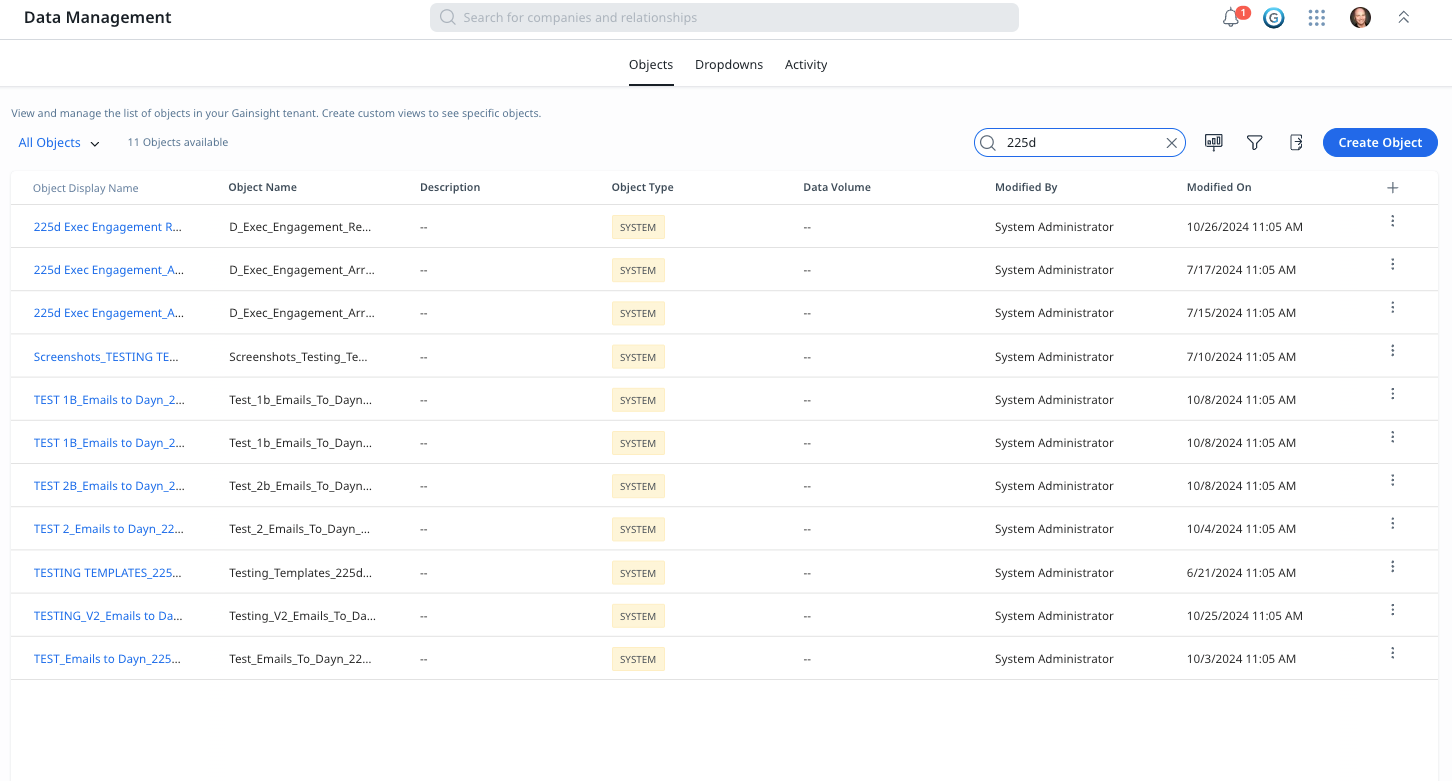Hi team,
I have a request from the customer Tanium to have the ability to Delete or have the Option to Delete the System Object that is created when JO/Dynamics are Published.
Use case - Customer Deletes the JO/Dynamic Program and then wants the ability or option to also delete the System Object that is created.
Discovery
Ability to Delete System Object/Have option to Delete System Object that is created when JO/Dynamics Programs are Published and Program is Deleted
 +2
+2Sign up
If you ever had a profile with us, there's no need to create another one.
Don't worry if your email address has since changed, or you can't remember your login, just let us know at community@gainsight.com and we'll help you get started from where you left.
Else, please continue with the registration below.
Welcome to the Gainsight Community
Enter your E-mail address. We'll send you an e-mail with instructions to reset your password.


